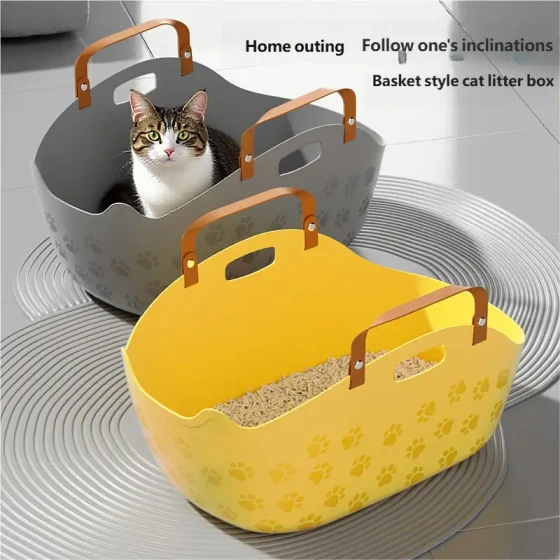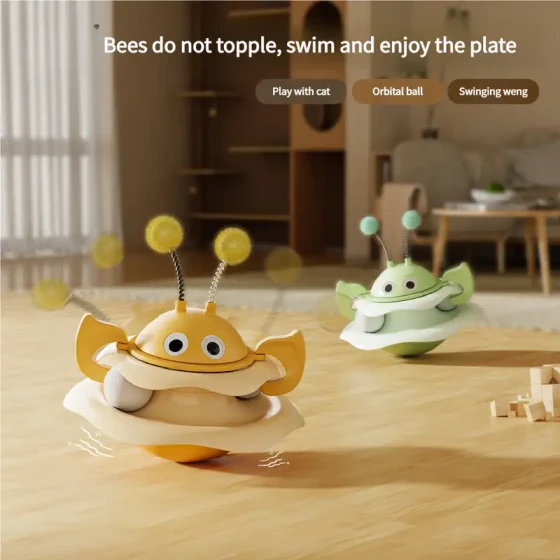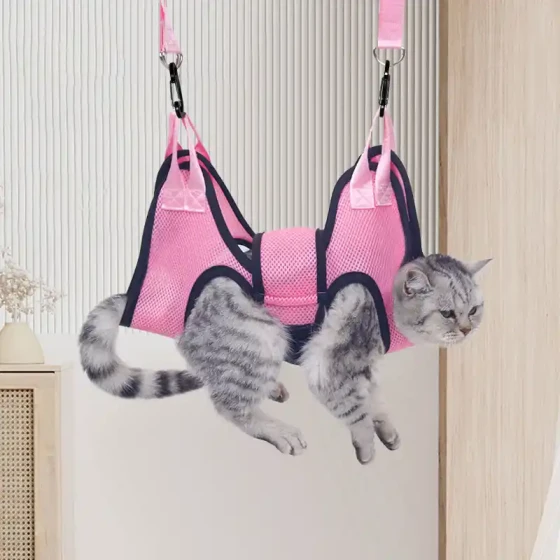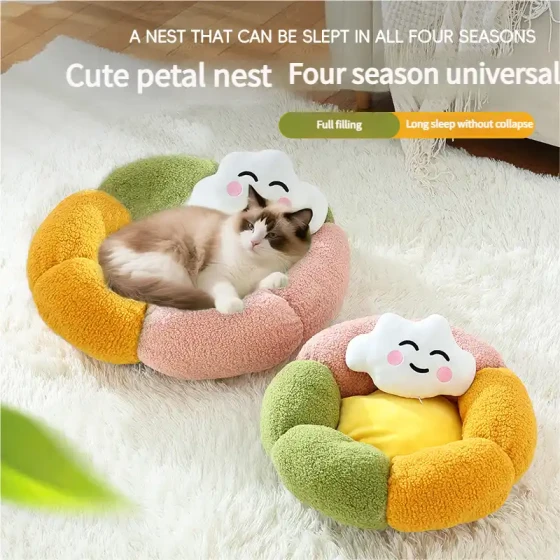What Does a High-Quality Orange Tabby Cat Look Like? A Comprehensive Analysis from Coat Color to Personality!
Orange tabby cats, as one of the most popular coat colors among domestic cats, have won countless cat lovers’ hearts with their warm, bright orange fur and affectionate personality. But what kind of orange tabby cat qualifies as "high-quality"? This article will provide a detailed analysis of the standards for premium orange tabbies from multiple aspects including coat color characteristics, head structure, body proportions, and personality traits, helping you pick a "big orange" cat with both excellent looks and character.
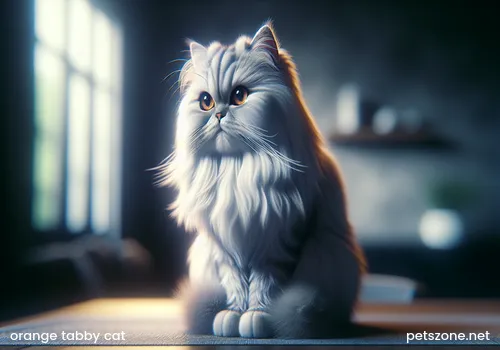
Core Standards of Orange Tabby Cat Appearance
High-quality orange tabby cats have unique standards in terms of coat color, body shape, and personality. Unlike purebred cats with strict competition criteria, orange tabbies are classified by coat color rather than breed, so their appearance judgment focuses more on overall harmony and distinct features. An outstanding orange tabby often catches people’s attention at first glance, showing a healthy, lively, and elegant temperament.
In the pet world, the evaluation of orange tabby appearance lacks internationally unified standards like purebreds, but experienced breeders and cat enthusiasts have summarized a widely accepted set of premium orange tabby characteristics through long-term observation. These standards relate not only to the cat’s external beauty but also closely connect with its health and personality traits. Understanding these criteria can give you a professional perspective whether you want to select a high-quality orange tabby as a pet or simply admire these furry friends.
It is worth noting that the appearance of orange tabbies is somewhat related to their breed background. Although "orange tabby" refers to color rather than breed, orange tabbies from different breeds (such as Persian orange tabbies, American Shorthair orange tabbies, Chinese native orange tabbies, etc.) differ slightly in appearance traits. The standards described here mainly target the common orange domestic cats, specifically the Chinese native orange tabbies, which are the most common type in domestic households.
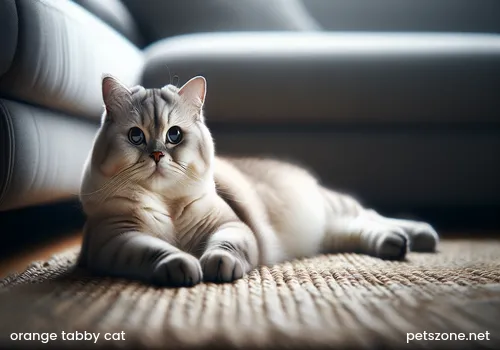
Coat Color and Patterns: The First Impression of Orange Tabbies
The coat color of orange tabbies is the primary factor in judging their appearance. High-quality orange tabbies should have a vivid and bright coat showing a full orange-yellow tone, similar to ripe oranges, which looks especially warm and dazzling in sunlight. Based on coat distribution, good-looking orange tabbies mainly fall into two types: fully orange and orange-white mixed.
Fully orange cats are the classic type; their whole-body coat color should be uniform without obvious mixed colors or spots. These orange tabbies may have faint white stripes, but those stripes should be regularly distributed, not chaotic. Only a few fully orange cats have small white patches on their belly or chest. Color saturation is an important indicator — the richer the color, the better; pale yellow or washed-out orange color reduces the overall appearance value.
Orange-white mixed cats are preferred with large patches; orange patches and white base fur should have clear boundaries with complete and distinct patterns. Common ideal patterns include: a large orange area on the back with a white belly (called "golden blanket on silver bed"), or a white body with a fully orange tail (called "golden hairpin stuck in silver vase"). These traditional names reflect ancient appreciation for the aesthetic of orange tabby coats.
The pattern type of the orange tabby coat is also a key point in appearance evaluation. High-quality orange tabbies commonly display one of the following tabby patterns: classic tabby (marbled), mackerel tabby (fine stripes), spotted tabby, or layered color tabby. Among them, the classic tabby is the most common and popular, making the orange tabby look like a little tiger. Whichever pattern, the design should be symmetrical with clear borders, without blurring or breaks.
It is worth mentioning that all well-appearing orange tabbies share one trait: a forehead ''M'' shaped pattern. This iconic mark is common in tabby cats, with a beautiful legend behind it: it is said the Virgin Mary, grateful that an orange tabby calmed baby Jesus, kissed its forehead, leaving this "M" shape mark. The clearer and more symmetrical this pattern is, the more vivid and adorable the orange tabby’s facial expression appears.
Table: Characteristics of Coat Color and Patterns in High-Quality Orange Tabbies
Head and Facial Features
The head structure of orange tabbies is an important criterion in judging appearance. A proportionate and distinct head enhances the cat’s attractiveness greatly. A premium orange tabby should have a rounded and full head, presenting a cute round or slightly wide wedge shape, rather than a sharp and thin triangle. This head shape not only meets public aesthetic preferences but also reflects healthy development.
The shape of the ears significantly affects the cat’s facial expression. High-quality orange tabby ears should be medium-sized, with a wide base and slightly rounded tips, with proper spacing between the ears proportionate to the head. Ears that are too large or too small, or set too high or low, reduce overall appeal. The inner ear should be clean without abnormal discharge; healthy pink ear canals also indicate good appearance.
The eyes are the most expressive feature of an orange tabby’s face and a key factor in appearance assessment. High-grade orange tabbies have large, round, bright, and lively eyes; with moderate spacing, harmonizing well with other facial features. Eye colors preferred are green, yellow-green, or golden yellow, clear and bright without cloudiness or discharge. Some especially high-quality orange tabbies have "odd eyes" (different colored eyes), a rare trait considered one of the most prized appearances.
The nose and mouth should also meet certain standards. The nose should be straight with a moderate length; the nose leather moist and without cracks; color usually brick red or a tone consistent with the coat color. The muzzle (mouth and nose area) is full; jaw strong but not protruding; normal bite alignment. Prominent whisker pads and long, complete whiskers are traits of health and good appearance.
Facial expression is a direct indicator of an orange tabby’s appearance. A high-quality orange tabby should have a gentle, curious, or alert expression when still, not dull or aggressive. When moving or interested, the facial expression should be lively with sparkling eyes—these are external signs of good appearance and mental state.
Body Structure and Limb Characteristics
The body proportions of orange tabbies are an essential part of appearance evaluation. A well-built orange tabby has a sturdy and well-proportioned body, muscular but not bulky, with smooth lines. The length-to-height ratio should be balanced—not overly slender or too short and stocky. This balance not only looks pleasing but also reflects good health and physical capability.
The chest and shoulders should be broad and strong, conveying a robust impression. The back line slightly arches from shoulder to rump, demonstrating an elegant curve. The abdomen can be slightly rounded, especially in adult males, but should not sag or be flabby. A quality orange tabby standing normally shows a firm abdominal contour without obvious fat deposits.
Limb shape directly influences the cat’s overall posture. High-grade orange tabby limbs are strong and sturdy, with solid bones, proportionate to the body. Front legs are straight; hind legs slightly longer than front legs, facilitating jumping and running. Paw pads are round and compact; toes neatly aligned; pads thick, soft, usually pink or matching nose color.
The tail characteristics are often overlooked but important for orange tabby appearance. A quality tail is of moderate length, thick at the base, tapering toward the tip, covered with dense fur. Tail hair matches the body color; some have ring patterns with the tip often darker or black. The tail should move flexibly without stiffness or abnormal bends, indicating healthy bone structure.
It is worth mentioning that orange tabbies (especially males) typically have larger body sizes, which is normal and genetic. Statistics show male orange tabbies tend to be about one-third larger and heavier than females. Therefore, when assessing appearance, gender should be considered, without judging solely by size but by balanced proportions and overall harmony.
Personality and Behavioral Characteristics
The personality traits of orange tabbies may not traditionally be part of appearance evaluation, but they are very important in actual care. A top-quality orange tabby not only excels in looks but also has a good personality. Fortunately, orange tabbies are known for their friendliness and are reputed as the “most amiable” cats.
Docility and affection are the most prominent personality advantages of orange tabbies. High-quality ones typically have gentle temperaments, enjoy human interaction, are patient with family members (including children), and seldom show irritability or aggression. They often like being petted and hugged; some even actively seek owner attention and affection, greatly enhancing their "appearance" value through their amiable nature.
The balance between liveliness and calmness also reflects excellent personality in orange tabbies. Young orange tabbies tend to be lively, playful, and curious, which signifies healthy growth. Adults should balance activity and quietness—maintaining some play interest while not being overly noisy or destructive. Such moderate activity makes them ideal family pets.
Orange tabbies are known for high intelligence and trainability, which factor into appearance considerations as well. Quality orange tabbies learn quickly, understand owner commands and household rules, and some can be trained to perform simple tricks. Their ability to communicate through vocalization and body language greatly enriches the ownership experience.
It is worth noting the tendency of orange tabbies to overeat and gain weight. While it’s an endearing trait, excessive obesity affects health and appearance. The saying “nine out of ten orange tabbies are fat” is not exaggerated, due to many being males with larger builds and strong food interest. Maintaining a moderate weight and well-proportioned body is essential to sustaining high appearance quality.
Health and Care Essentials
Health status is the foundation of an orange tabby’s appearance; all external beauty depends on good health. Selecting a premium orange tabby requires careful health checks to avoid individuals with underlying diseases or genetic defects. A truly high-quality orange tabby combines both outward beauty and inner health.
Coat condition is the most visible health indicator. A premium orange tabby’s fur should be dense, soft, and shiny, without bald spots, dandruff, or abnormal hair loss. It should feel smooth to the touch, with a rich undercoat — signs of good nutrition. Long-haired orange tabbies need regular grooming to prevent matting and hairball issues.
Eye and ear cleanliness is also critical. Healthy orange tabbies have bright eyes free from discharge, with eyelids not red or swollen; ears should be clean inside, without black discharge (a sign of ear mites) or strange smells. The condition of these areas affects appearance and directly reflects overall health.
Mobility and posture reveal skeletal and muscular health. A high-quality orange tabby moves agilely with powerful jumps, steady walking, no limping or abnormal posture. Flexible joints and quick reflexes indicate good appearance and wellness.
Diet management and weight control are crucial for maintaining appearance. Given the orange tabby’s propensity to gain weight, owners must carefully control food portions, ensure balanced nutrition, and avoid high-calorie snacks. Obesity not only affects looks but can cause diabetes, arthritis, and other health issues, damaging the cat’s long-term appearance and quality of life.
Regular grooming and care help keep orange tabbies at their best. This includes: brushing 2-3 times a week (more frequent for long-haired), regular nail trimming, teeth cleaning, and necessary baths (typically every 1-2 months). These routines not only maintain aesthetics but also help in early detection of health problems.
Frequently Asked Questions
Q: Which looks better, fully orange tabbies or orange-white mixed tabbies?
A: There is no absolute better or worse between these two types; both can be high-quality orange tabbies. Fully orange cats appear more traditional and classic, sometimes with faint white stripes; orange-white mixed cats feature striking contrast and beautiful patterns. Choice depends on personal taste and specific individual traits like color saturation and stripe symmetry.
Q: Are there differences in appearance between male and female orange tabbies?
A: Male orange tabbies generally are larger, more prone to overweight, have broader heads, and look more imposing; females tend to be more delicate and well-proportioned. Judging appearance focuses on whether each part meets the standard rather than simply gender differences. The saying “nine out of ten orange tabbies are male” holds some truth since orange genes are more common in males.
Q: How to tell if an orange tabby’s appearance will change with age?
A: Certain features in kittens predict adult appearance: coat brightness (bolder colors likely remain), pattern clarity, fullness of head contours, and limb-to-body proportions. Usually, orange tabbies around 6-8 months old show basic appearance traits, but full maturity takes 1-2 years. Good diet and health care help maintain lifelong appearance.
Q: Are there differences in appearance standards between long-haired and short-haired orange tabbies?
A: Long-haired orange tabbies have stricter coat requirements — dense smooth fur with rich undercoat, and ideally decorative neck fur; short-haired orange tabbies emphasize coat saturation and clear patterns. Other standards like head structure and body proportions are basically the same. Long-haired tabbies need more grooming, while short-haired ones are easier to maintain.
Q: Why is the "M" shaped pattern on orange tabbies’ forehead a mark of good appearance?
A: The “M” shaped pattern is a signature mark of tabby cats; most orange tabbies belong to the tabby pattern family. A clear and symmetrical “M” not only enhances facial beauty but also indicates pure lineage. Folklore says this mark has a sacred origin, adding special meaning. Therefore, this feature is an important bonus point in appearance assessment.
Conclusion
Orange tabbies, with their warm coat colors and affectionate personalities, have become sources of joy for countless families. A high-quality orange tabby offers both visual and emotional delight. Through this detailed analysis, you now have a comprehensive understanding of the standards for judging orange tabby appearance—from coat and pattern, body structure, facial features, to personality expression. This knowledge not only aids in making wise choices when selecting an orange tabby but also enriches your appreciation of these furry companions’ unique charms.
It is important to emphasize that appearance standards are significant but not the sole consideration in raising an orange tabby. Even those not fully meeting the “top” standards can become loyal and beloved family members if healthy and lively. After all, the greatest charm of orange tabbies lies not only in their looks but in their warm-hearted, lovable nature. As cat owners often say: “Big Orange Matters”—their weight is not just physical but symbolic of their place in our hearts.
Finally, whether you seek to select an outstanding orange tabby or simply learn more about these orange-colored spirits, we hope this article provides valuable insights. May every orange tabby lover find or accompany their own "perfect big orange," writing warm and interesting life stories together.
